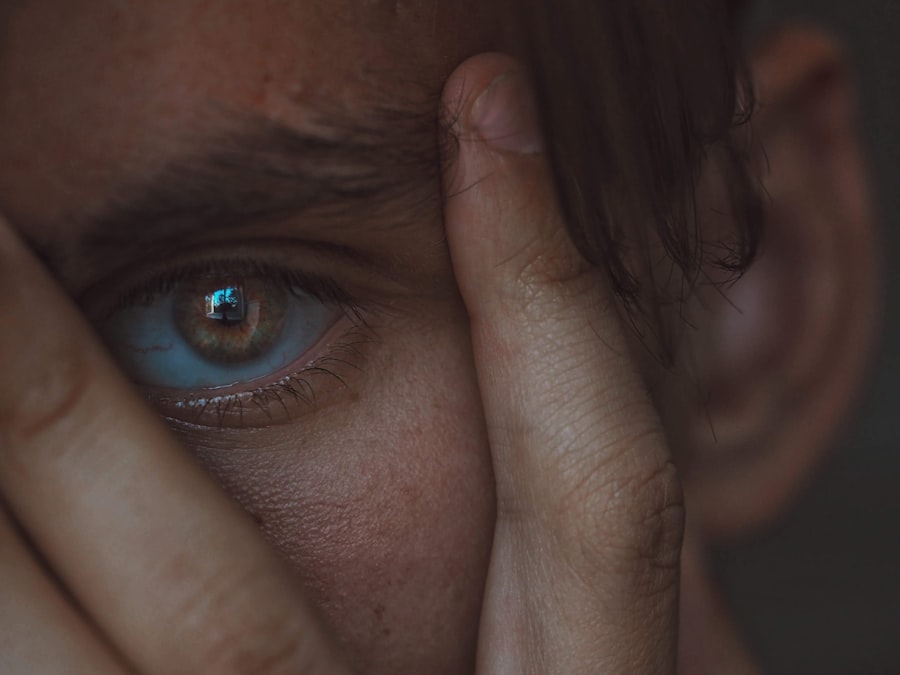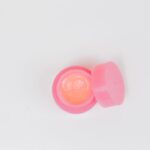Laser hair removal has emerged as a popular choice for individuals seeking a more permanent solution to unwanted hair. This innovative technique utilizes concentrated beams of light to target and destroy hair follicles, effectively reducing hair growth over time. When you undergo this procedure, the laser emits a specific wavelength that is absorbed by the pigment in your hair.
This process not only minimizes hair regrowth but can also lead to smoother skin, making it an appealing option for many. As you consider laser hair removal, it’s essential to understand how the treatment works. The procedure typically involves multiple sessions, as hair grows in cycles, and not all hair is in the same growth phase at any given time.
During your initial consultation, a qualified professional will assess your skin type and hair color to determine the most effective laser settings for your treatment. This personalized approach ensures that you receive optimal results while minimizing discomfort and potential side effects.
Key Takeaways
- Laser hair removal uses concentrated light to target and destroy hair follicles, leading to long-term hair reduction.
- Safety concerns for facial hair removal include potential skin damage, burns, and pigmentation changes, especially in sensitive areas like the face.
- Potential risks and side effects of laser hair removal for facial hair include redness, swelling, and temporary discomfort.
- Precautions for facial hair removal include avoiding sun exposure, using sunscreen, and avoiding certain skincare products before and after treatment.
- Choosing a qualified professional for laser hair removal is crucial to ensure safe and effective treatment for facial hair.
- Aftercare and recovery for laser hair removal may include using soothing creams, avoiding excessive heat, and following specific post-treatment instructions.
- Long-term effects and results of laser hair removal for facial hair can include significant hair reduction and smoother skin over time.
- Alternative hair removal methods for facial hair include shaving, waxing, threading, and depilatory creams, each with their own pros and cons.
Safety Concerns for Facial Hair Removal
When it comes to facial hair removal, safety should always be a top priority. The skin on your face is particularly sensitive, and using lasers in this area requires careful consideration. Before undergoing laser hair removal, it’s crucial to discuss any pre-existing skin conditions or sensitivities with your practitioner.
They will evaluate your skin type and medical history to ensure that you are a suitable candidate for the procedure. Additionally, you should be aware of the importance of using FDA-approved lasers and equipment. Not all devices are created equal, and some may pose greater risks than others.
By choosing a reputable clinic that adheres to safety standards, you can significantly reduce the likelihood of complications. It’s also wise to inquire about the practitioner’s experience and qualifications, as their expertise can greatly influence the safety and effectiveness of your treatment.
Potential Risks and Side Effects

While laser hair removal is generally considered safe, it is not without its potential risks and side effects. You may experience temporary discomfort during the procedure, often described as a sensation similar to a rubber band snapping against the skin. This discomfort usually subsides quickly, but some individuals may find it more intense than others.
It’s essential to communicate with your practitioner about any pain you experience so they can adjust the settings or provide numbing agents if necessary. In addition to discomfort, you might encounter other side effects such as redness, swelling, or mild irritation in the treated area. These symptoms typically resolve within a few hours to a few days.
However, in rare cases, more severe side effects can occur, including blistering or changes in skin pigmentation. It’s crucial to follow your practitioner’s aftercare instructions closely to minimize these risks and ensure a smooth recovery process.
Precautions for Facial Hair Removal
| Precautions for Facial Hair Removal |
|---|
| 1. Always do a patch test before using any new product to check for allergic reactions. |
| 2. Avoid over-exfoliating the skin before or after hair removal to prevent irritation. |
| 3. Cleanse the skin thoroughly before and after hair removal to prevent infections. |
| 4. Use a moisturizer or soothing cream after hair removal to calm the skin. |
| 5. Follow the instructions carefully when using at-home hair removal products to avoid adverse effects. |
Taking precautions before and after your laser hair removal session can significantly enhance your experience and results. Prior to your appointment, avoid sun exposure and tanning beds for at least two weeks. Sunburned or tanned skin can increase the risk of complications and may affect the efficacy of the treatment.
Additionally, refrain from using certain skincare products that contain retinoids or alpha hydroxy acids, as these can make your skin more sensitive. After your session, it’s essential to protect your skin from sun exposure by applying sunscreen with a high SPF. Your skin will be more vulnerable following the treatment, and protecting it from UV rays will help prevent complications such as hyperpigmentation.
You should also avoid hot showers, saunas, and strenuous exercise for a few days post-treatment to minimize irritation and allow your skin to heal properly.
Choosing a Qualified Professional
Selecting the right professional for your laser hair removal is crucial for achieving safe and effective results. Start by researching clinics in your area and reading reviews from previous clients. Look for practitioners who are licensed and certified in laser hair removal techniques.
A qualified professional will have extensive training and experience in using laser technology safely on various skin types. During your initial consultation, don’t hesitate to ask questions about their qualifications, experience, and the specific laser technology they use. A reputable practitioner will be transparent about their methods and will take the time to address any concerns you may have.
Aftercare and Recovery

Aftercare plays a vital role in ensuring a successful recovery following laser hair removal. Immediately after your session, you may notice some redness or swelling in the treated area; this is normal and should subside within a few hours. To soothe any discomfort, you can apply a cold compress or aloe vera gel to the area.
It’s important to keep the treated skin clean and moisturized to promote healing. In the days following your treatment, avoid activities that could irritate your skin, such as exfoliating or using harsh skincare products. You should also steer clear of direct sunlight and tanning beds for at least two weeks post-treatment.
If you experience any unusual symptoms or prolonged discomfort, don’t hesitate to contact your practitioner for guidance. Following their aftercare instructions diligently will help ensure optimal results and minimize any potential complications.
Long-term Effects and Results
One of the most appealing aspects of laser hair removal is its long-term effectiveness. Many individuals experience a significant reduction in hair growth after completing their treatment sessions. While some may require occasional maintenance sessions to keep unwanted hair at bay, most find that they enjoy smoother skin for an extended period.
The results can vary based on factors such as hair color, skin type, and hormonal influences. It’s important to have realistic expectations regarding the outcomes of laser hair removal. While many people achieve excellent results, some may still experience fine or light hair regrowth over time.
However, these hairs are often finer and less noticeable than before treatment. By understanding what to expect from the procedure, you can better appreciate the long-term benefits of investing in laser hair removal.
Alternative Hair Removal Methods
If laser hair removal doesn’t seem like the right fit for you, there are several alternative methods available for managing unwanted facial hair. Traditional options include shaving, waxing, and tweezing; each has its pros and cons. Shaving is quick and painless but requires frequent maintenance, while waxing can provide longer-lasting results but may cause irritation for sensitive skin types.
For those seeking more permanent solutions without lasers, electrolysis is another option worth considering. This method involves using an electric current to destroy individual hair follicles, making it effective for all hair types and colors. However, electrolysis can be time-consuming since each follicle must be treated individually.
Ultimately, the choice of hair removal method depends on your personal preferences, pain tolerance, and desired results. By exploring various options and consulting with professionals, you can find the best solution that aligns with your needs and lifestyle.
According to a recent article on inlaserhairremoval.com, laser hair removal can be customized to target specific areas of the face, such as the upper lip or chin, for optimal results. This article also discusses the benefits of laser hair removal for those with sensitive skin or who are prone to ingrown hairs. If you are interested in learning more about laser hair removal for the face, be sure to check out this informative article.
FAQs
What is laser hair removal for the face?
Laser hair removal for the face is a cosmetic procedure that uses concentrated beams of light to remove unwanted facial hair. The laser targets the pigment in the hair follicles, damaging them and inhibiting future hair growth.
Is laser hair removal safe for the face?
When performed by a qualified and experienced professional, laser hair removal for the face is generally considered safe. However, there may be some risks and potential side effects, such as skin irritation, redness, and changes in skin pigmentation.
How effective is laser hair removal for the face?
Laser hair removal for the face can be highly effective in reducing and even permanently removing unwanted facial hair. Multiple sessions are usually required to achieve the best results, as the treatment is most effective on hair in the active growth phase.
Are there any limitations to laser hair removal for the face?
Laser hair removal may not be suitable for everyone, especially those with certain skin tones or hair colors. It is important to consult with a qualified professional to determine if laser hair removal is a suitable option for your specific needs.
What are the potential side effects of laser hair removal for the face?
Common side effects of laser hair removal for the face may include temporary redness, swelling, and skin irritation. In rare cases, there may be changes in skin pigmentation or scarring. It is important to follow post-treatment care instructions to minimize the risk of side effects.





